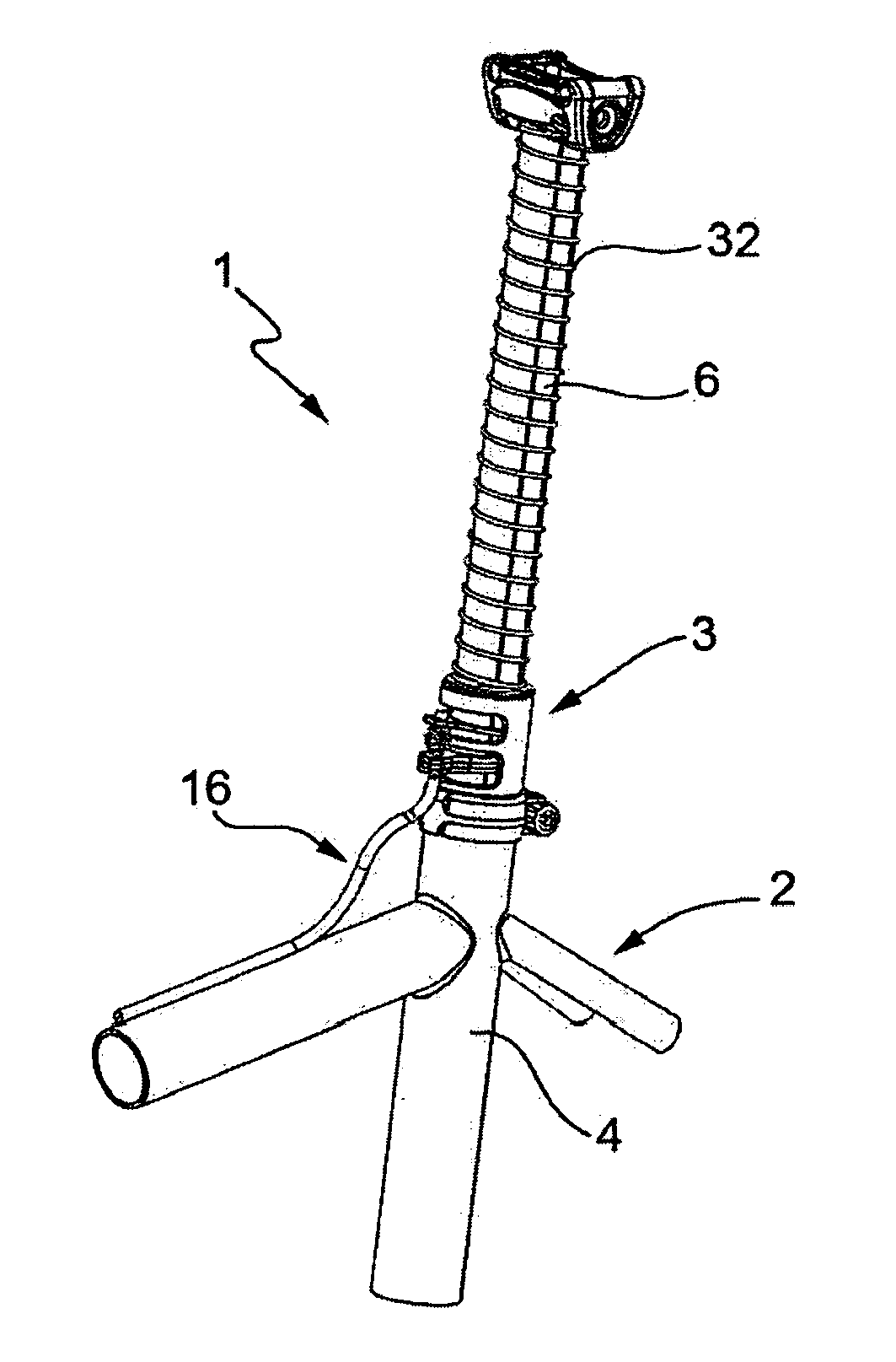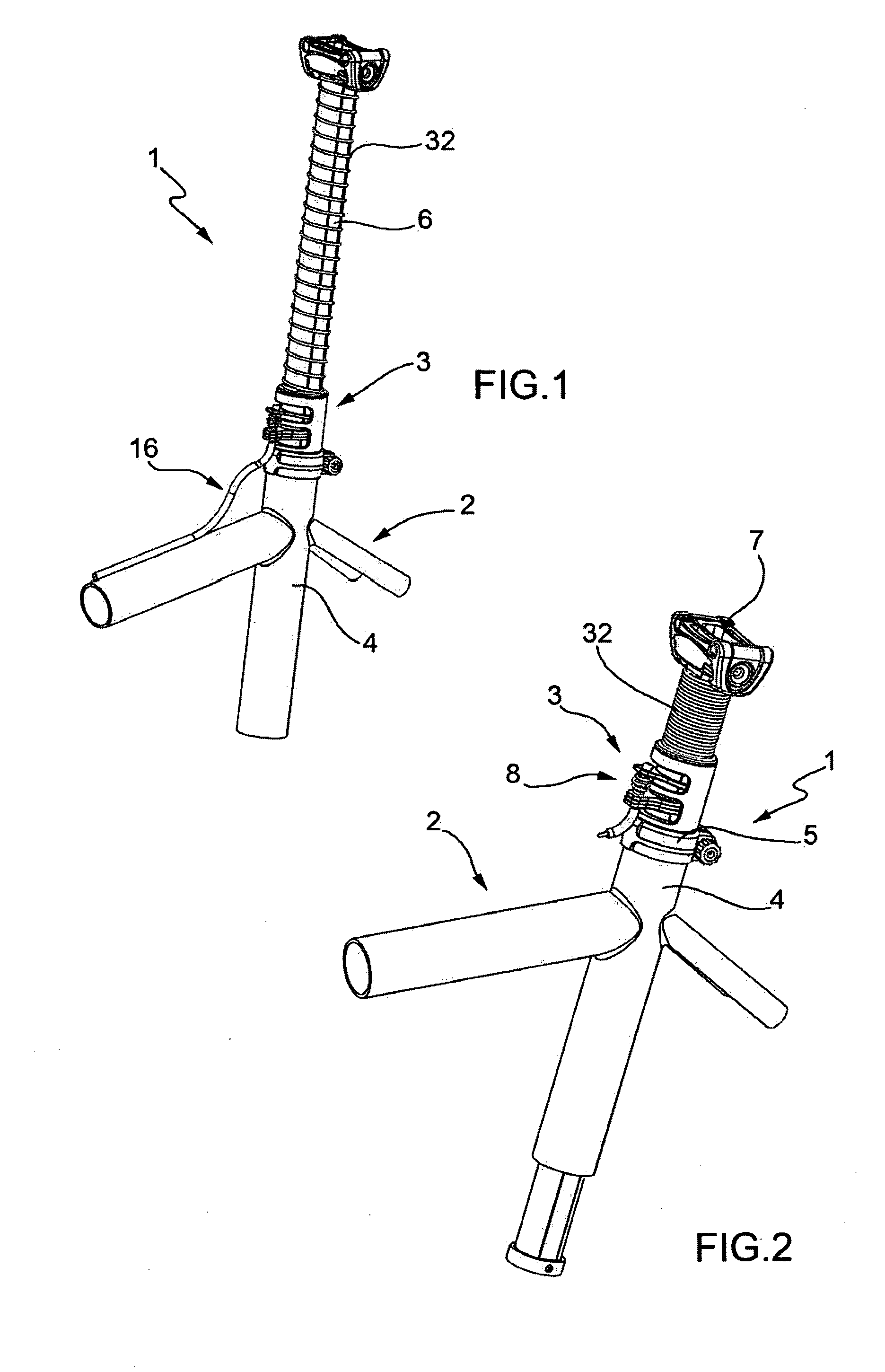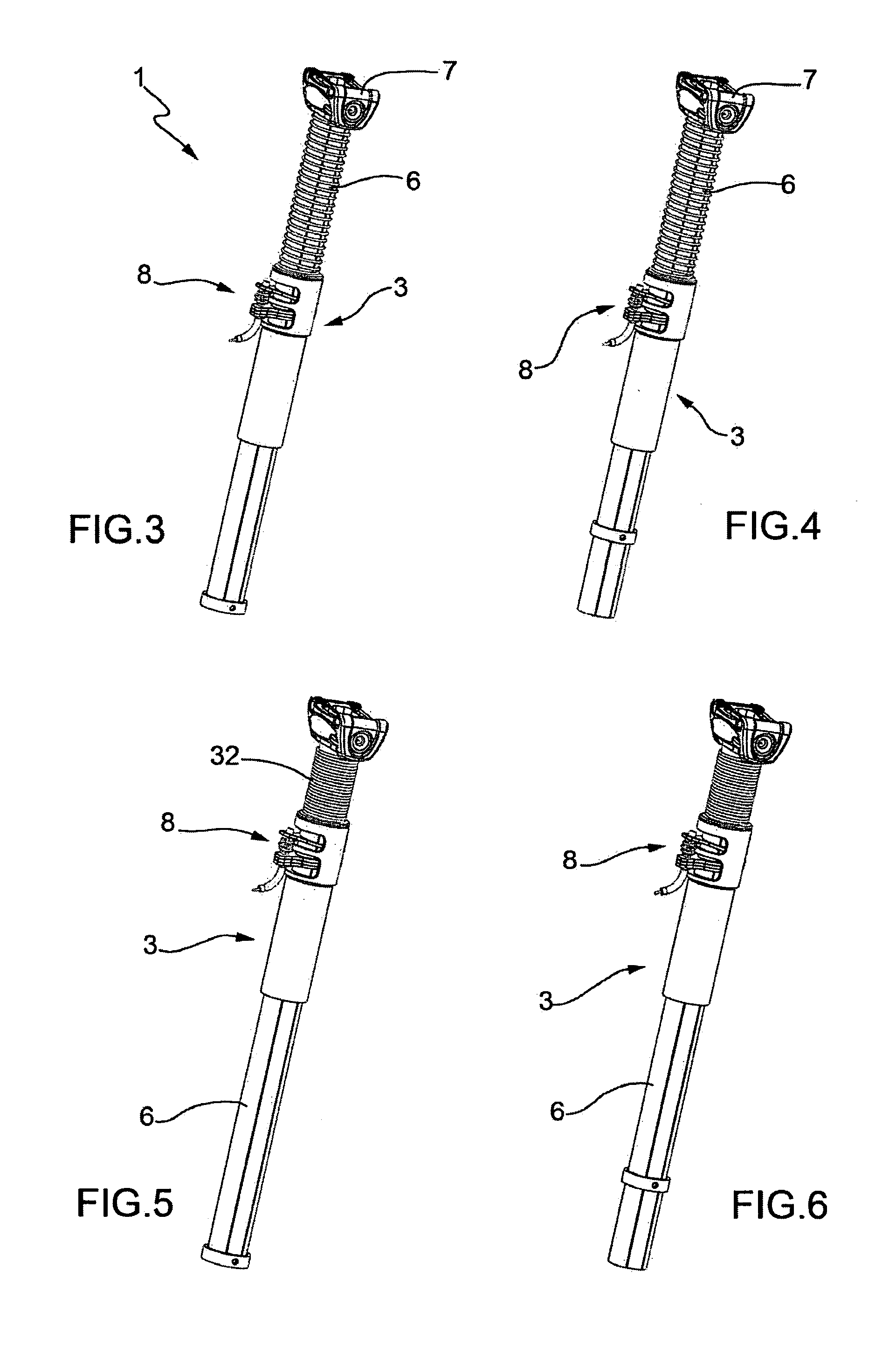Adjustable seat post assembly for bicycles and the like
- Summary
- Abstract
- Description
- Claims
- Application Information
AI Technical Summary
Benefits of technology
Problems solved by technology
Method used
Image
Examples
Embodiment Construction
[0085]With reference to the representation of FIG. 1, an adjustable seat post assembly for bicycles and the like according to the invention is wholly indicated with reference numeral 1.
[0086]It is pointed out that in the following embodiments individual characteristics, given in connection with specific embodiments, may actually be interchanged with other different characteristics that exist in other embodiments.
[0087]As shown in FIG. 1, the post assembly 1 is installed in a bicycle frame 2, but it can be installed in frames of any other similar transport means as well.
[0088]The assembly 1 according to the invention comprises a bushing, wholly indicated with 3 in FIGS. 3-6, suitable to be inserted in the frame's seat tube 4, and suitable to be fixed by means of a clamp 5, which is substantially traditional and known per se. A quill 6 is slidingly inserted in the bushing 3: the length of the quill 6 is obviously such as to allow the user to get the minimum or maximum height of the se...
PUM
 Login to View More
Login to View More Abstract
Description
Claims
Application Information
 Login to View More
Login to View More - R&D
- Intellectual Property
- Life Sciences
- Materials
- Tech Scout
- Unparalleled Data Quality
- Higher Quality Content
- 60% Fewer Hallucinations
Browse by: Latest US Patents, China's latest patents, Technical Efficacy Thesaurus, Application Domain, Technology Topic, Popular Technical Reports.
© 2025 PatSnap. All rights reserved.Legal|Privacy policy|Modern Slavery Act Transparency Statement|Sitemap|About US| Contact US: help@patsnap.com



